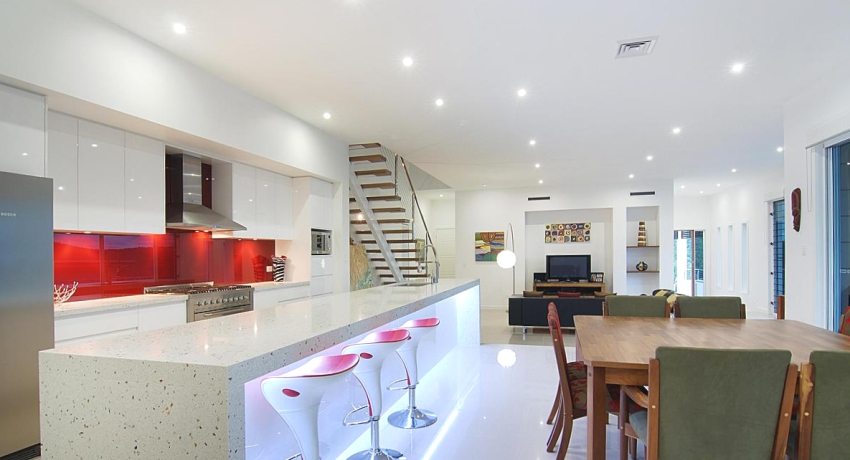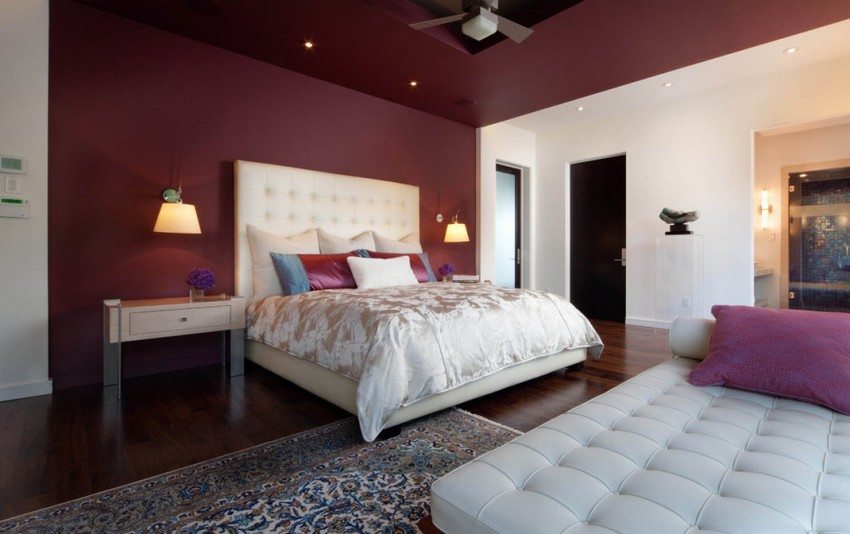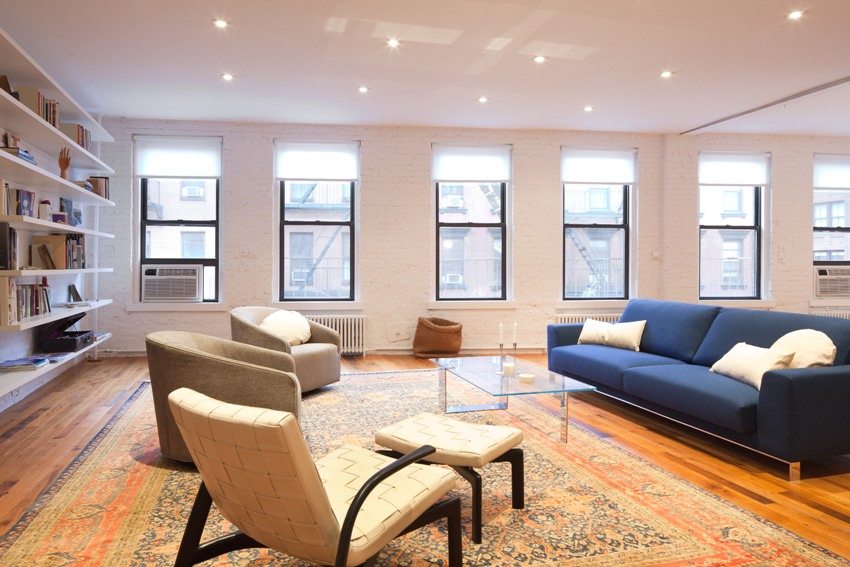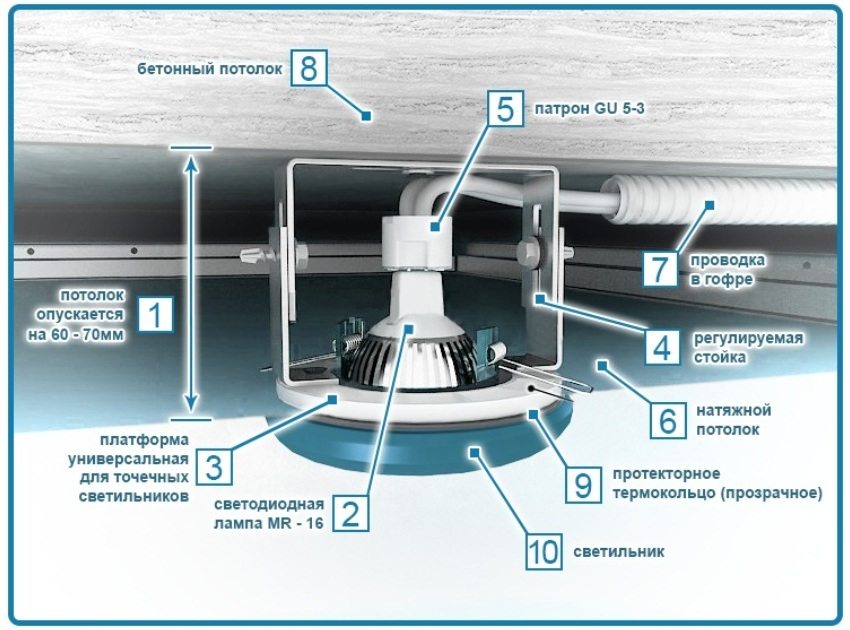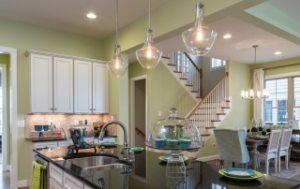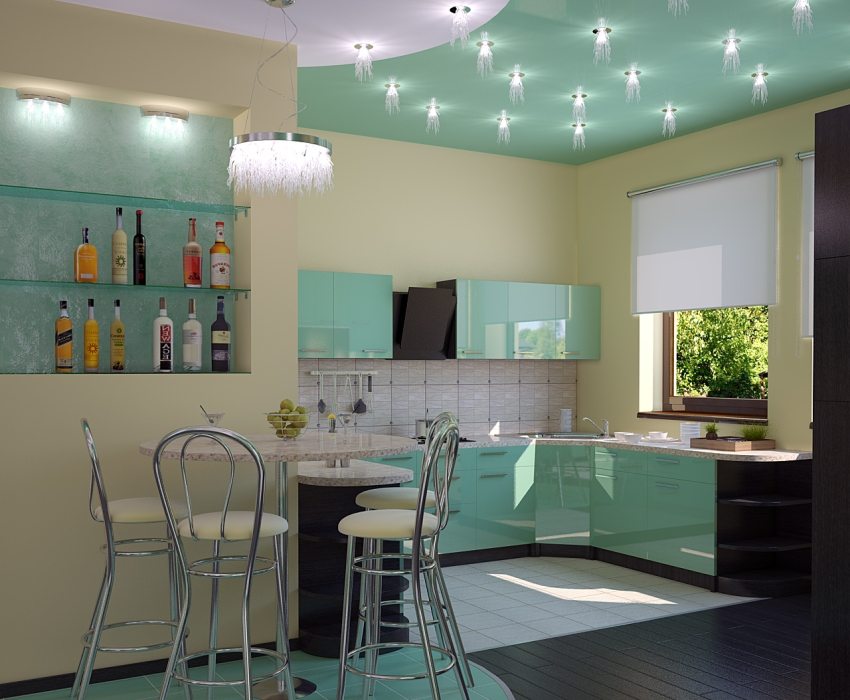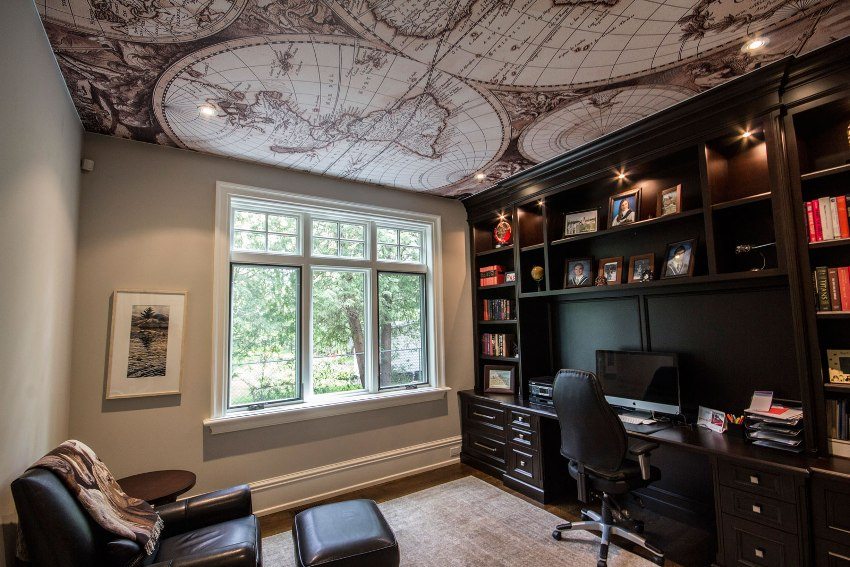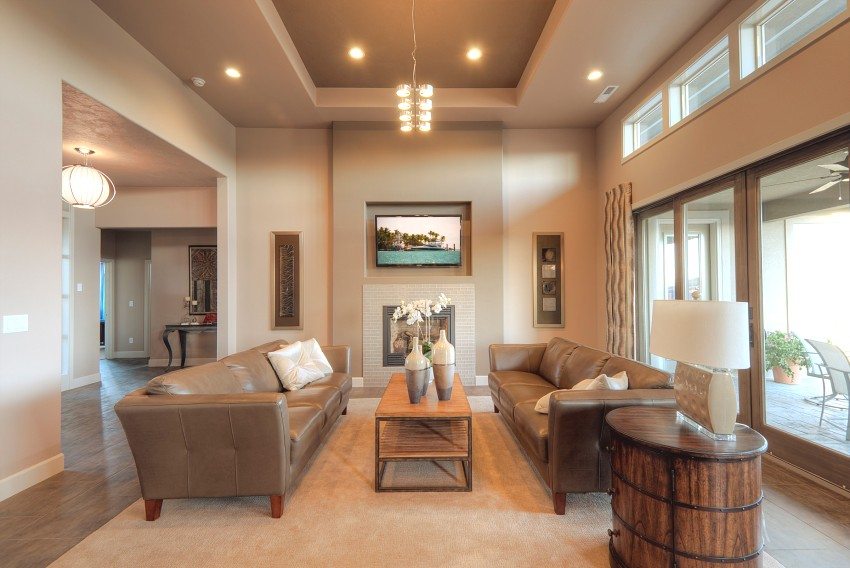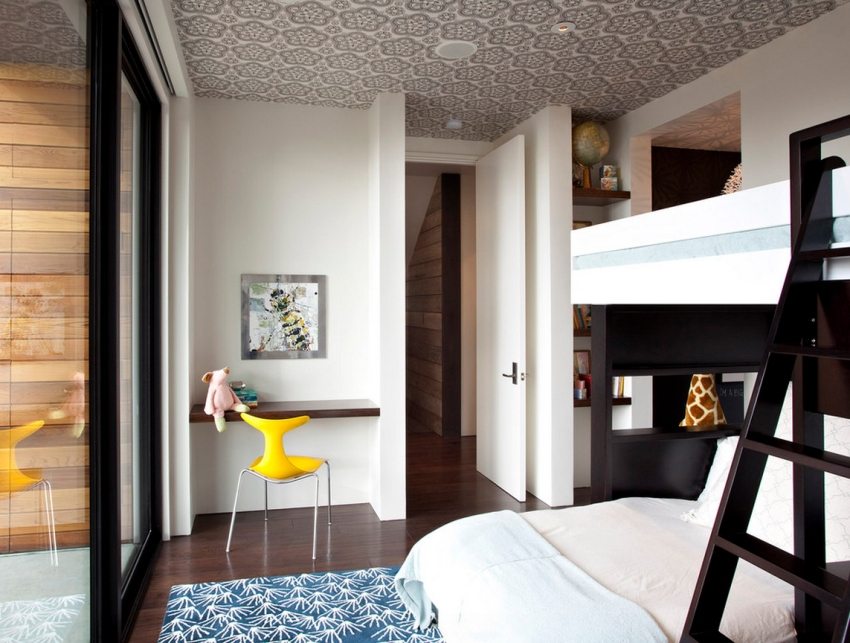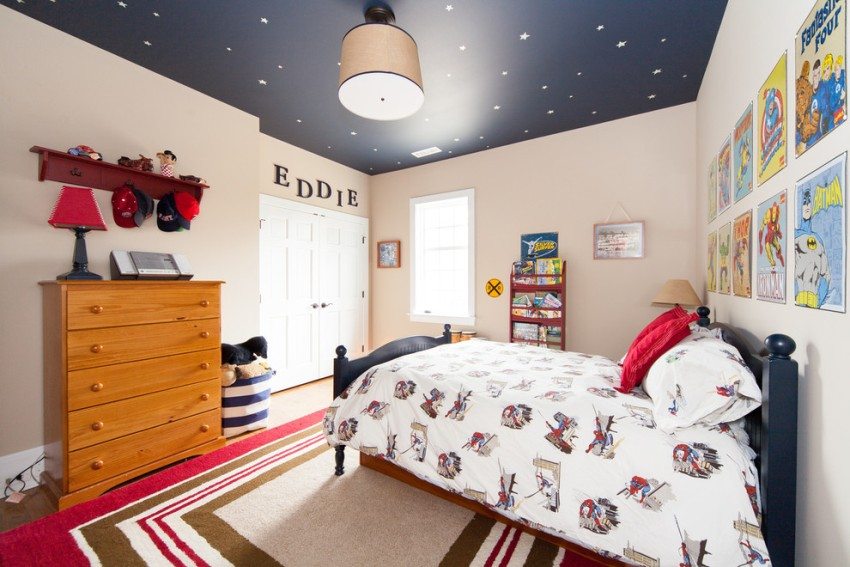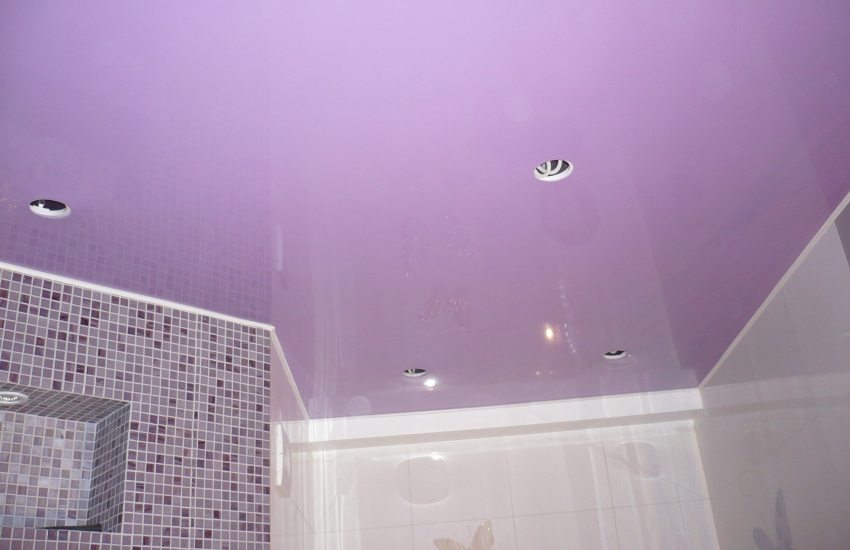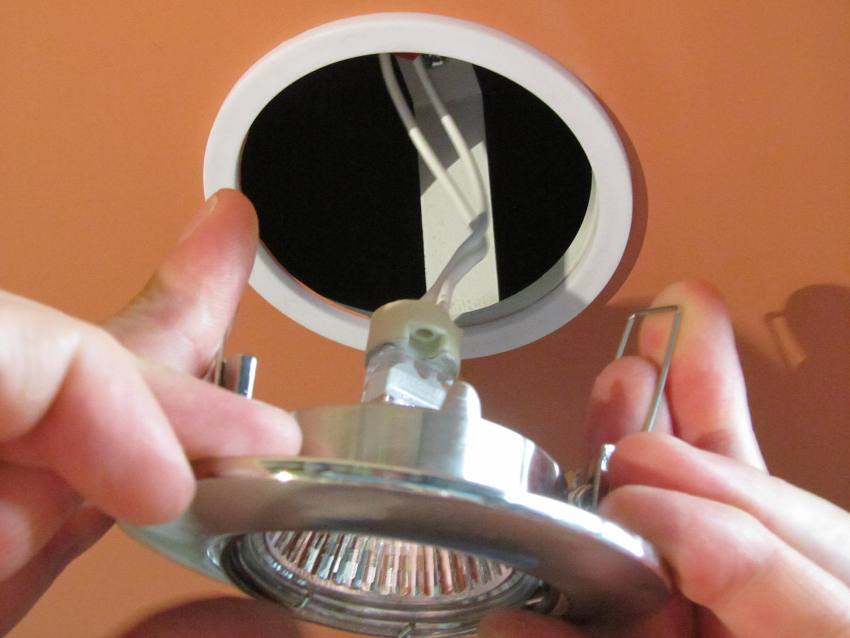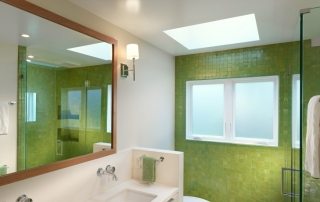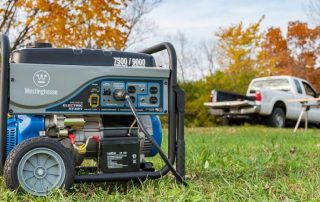Spotlights for stretch ceilings will help to create bright, high-quality lighting in any room. The photos below show all possible options for installing such elements, from which you can choose the best one that suits a particular room. The correct selection and installation of luminaires is possible only with some knowledge. It is necessary to familiarize yourself with the existing types of light sources and the rules for their installation.
Content [Hide]
The subtleties of lighting stretch ceiling
Correct and complete lighting must meet many requirements. It should be:
- uniform;
- does not distort shadows;
- dimmable;
- soft on the eyes.
An ordinary Soviet light bulb cannot become a full-fledged light source, since it does not have sufficient brightness and the corners in the rooms will always be shaded. Among other things, conventional lamps are not suitable for modern stretch ceilings, as they get too hot and can ruin the material. To avoid such troubles, you need to correctly select spotlights for stretch ceilings. Photos of their species will help you make the right choice.
Spotlights for stretch ceilings. Photos of varieties
Luminaires for stretch ceilings are produced in several types. Photos of the varieties are shown below. Their main difference is the installation depth. Most often, mortise lamps are used, the installation of which implies a violation of the integrity of the stretch ceiling. To prevent the fabric from tearing around the holes, special plastic rings are attached to them.
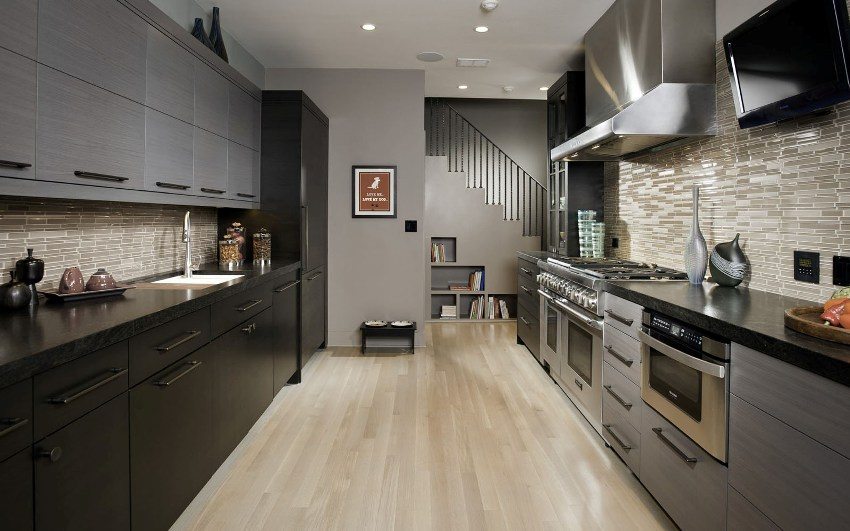
Spot lighting on fabric stretch ceiling
Above ceiling level
The different lighting elements are divided into three types, depending on the level of installation relative to the ceiling. Appliances that are installed above the material tension line create a glowing sensation from inside the ceiling. It's a pretty sight to behold, but such a montage has a couple of drawbacks:
- the power of the received light is not fully used, since the main part remains behind the ceiling level;
- due to the lack of ventilation between the rough stretch ceiling, such lamps can get quite hot, therefore, only energy-saving lamps or made of LEDs are allowed.
Ceiling level
Luminaires located flush with the stretched ceiling material have a much higher light scattering efficiency than their counterparts, recessed inward. They also have a drawback. Lamps with a power of more than 35 W cannot be installed in them. For some light bulbs, a transformer is additionally required, since the manufacturers did not provide for the possibility of using them from a standard 220 V.
Related article:
|
The installation of transformers is associated with additional difficulties. A failed device is quite difficult to replace, since this will require dismantling a part of the stretch ceiling. Therefore, it is worth buying lamps designed for 220 V.
Luminaires located below the level and overhead
Light sources located below the tension level of the ceiling material produce the strongest dispersion. Overhead lamps have great advantages, for the installation of which a special base is prepared. Due to this, lamps of different types and powers can be used in such devices.
Other types of lamps
With the help of special light sources, you can recreate the unique effect of the "starry sky" in the apartment. Such beauty can be achieved using certain types of lamps with fiber optic filaments that can flicker. Such two-level backlit stretch ceilings look extraordinary. A photo of such lighting options, located below, conquer with their uniqueness and originality.
Helpful advice! If "mignon" -type bulbs are used for spotlights, then their number is calculated based on 2-3 m² of room area per lighting element.
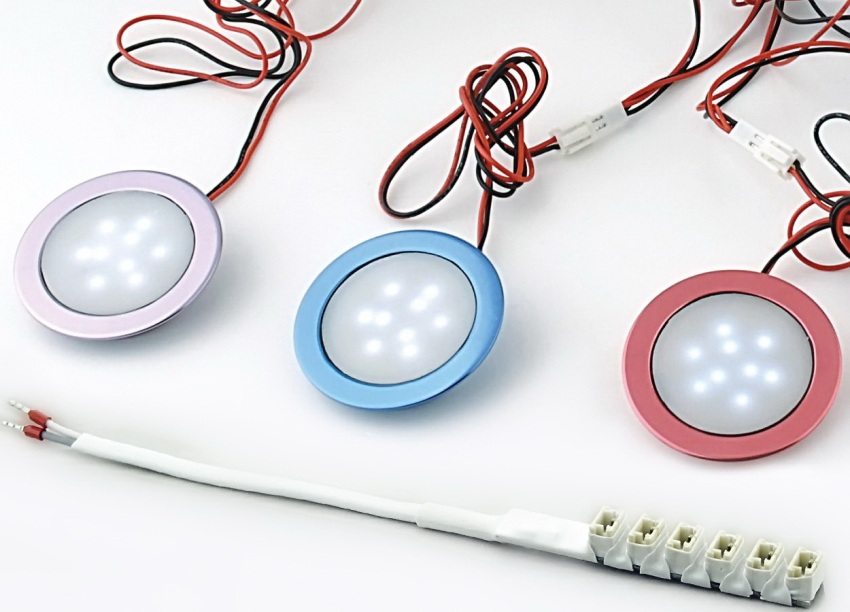
LED ceiling fixtures
Rules for the location of lamps in living rooms
The lighting of any room depends on the correct location of the stretch ceiling fixtures. A photo accommodation options demonstrate the positives of each. For example, a kitchen needs brighter lighting for the workplace. Therefore, additional point light sources should be placed near the walls where the hob, sink or cutting table are installed. Basic lighting will be sufficient for the dining table.
The lighting of a hall or a room for receiving guests also has some features. In such rooms, a multi-lamp is used as a central light source. chandelier... Since it is installed in the middle of the room, the corners remain in the shade. The location of 3-4 spotlights in each corner of the ceiling will help illuminate the entire Hall completely.
The bedroom does not require the installation of powerful light sources. Here it is enough to illuminate the corners with several spotlights for stretch ceilings. Photos of bedrooms with this type of lighting, complemented by a couple of small sconces, demonstrate the warmth and tranquility of the room.
Helpful advice! Bedroom lighting can be supplemented with small lamps hidden under the eaves. Thanks to this additional lighting, the room seems more comfortable and much more spacious.
Children's lighting
When planning lighting, special attention should be paid children's room... Light sources located in such a room should be:
- powerful enough;
- soft;
- not affecting vision;
- interesting to the kid.
Most often, for children, an arc arrangement of lamps is used.This option is convenient for families where two children are in the same room. While one is busy reading in a well-lit area, the other can rest without unnecessary light. With this arrangement of lamps, two-level stretch ceilings with illumination look quite original. Photos of children's rooms with correctly located light sources will help you choose the best option for your home.
Bathroom and hallway lighting
Correct placement of lighting fixtures in these rooms is equally important. Since the corridor is most often small in size, correct lighting will help to visually increase the volume of the room. Most often, they use the arrangement of lamps in a row, trying to choose small ones in size, but with a rather bright light.
The bathroom is probably the only room where you can't really walk around because of its small area. It is enough to purchase 4-8 spotlights for stretch ceilings. Photos of such rooms show different ways of arranging lighting elements.
Brief instructions for the installation of luminaires
Preparation for the installation of light elements begins even before the installation of the stretch ceiling. It is necessary to allocate places for their fastening, bring wires, screw on the racks and brackets to support the lamps. After stretching the ceiling in the film, carefully cut out holes for the lighting elements. Then, using glue, a plastic ring is attached, the lamp is connected to electricity and placed in a prepared place.
Helpful advice! When installing point light sources, you need to remember about caution. The film from which the tensioning structures are made is rather thin and it is easy to spoil it.
Such installation can be carried out independently, even if it is planned to install two-level backlit stretch ceilings... Photos of finished ceiling structures with point light sources emphasize the beauty and unusualness of such lighting.
